Since I am struggling with wrist and elbow pain, I find this topic extra interesting. But I know I am not alone. Here are some arm friendly tennis racquets.
Tennis is sadly an injury-prone sport. Knees, elbows, wrists, and shoulders are all subjected to a lot of shocks during a tennis session. This is why it is important to prevent injuries and play with the right equipment. I am a big fan of following a strength and conditioning program (link to some good options) but playing with arm friendly tennis racquets is also important. I wrote about arm friendly strings here.
There are also ways to make your current racquet setup more arm-friendly of course, but let’s get into that later.
How do I know if a racquet is arm-friendly?
For one, you should always read the Tennisnerd racquet reviews :), but it is also good to know what factors to look for in a tennis racquet. When it comes to your racquet, arm issues usually evolve from a stiffer setup that sends a lot of vibrations through to your arm. That is why many racquets come with some form of dampening system. As long as you hit the ball in the sweet spot you are fine, but not even the pros hit the middle of the racquet all the time. And it is of course even less frequent for recreational players. That is why it is important to mitigate the shocks from off-center shots.
What do I mean by a stiffer setup? The string is, of course, really important here, but I deal with it in this post. When it comes to your racquet, you should look at a number of things:
Things to look for in your tennis racquet
- Stiffness rating. This is usually measured in RA. Everything above 65 RA strung is going to be pretty stiff. It doesn’t mean you can’t play with it, as that depends on the materials used inside the racquet (the so-called “layup”) and the dampening tech. One general rule: the thicker the beamwidth – the higher the stiffness.
- Racquet weight also plays a role here. A heavier racquet will usually offer better comfort thanks to the mass impacting the ball. This is why the Wilson Pro Staff Classic, with a stiffness rating in the 70s unstrung, still felt pretty comfortable to play with. If your racquet is light and stiff, this is not a good combination if you want to find a softer setup for your body.
- Dampening tech. One of the battlefields for tennis manufacturers is finding the best dampening system to be able to create powerful, but still relatively comfortable racquets. Every year there are new technologies being released, but you won’t really know how well it works until you have played with a racquet for a while.
- Head size. The head size boils down to something called stringbed stiffness. A smaller head size will create less string surface and a smaller sweet spot, which means it will be easier to mishit and get more vibrations. The smaller and tighter the string bed, the stiffer it is. That is why a small, but very flexible racquet can feel stiff at times.
- String pattern. This is related to the topic above, the tighter the string pattern, the higher the stringbed stiffness. This is not going to make a huge difference, but a stiff 95 sq inch racquet will likely feel stiffer than a stiff 100 sq inch racquet.
So, what racquets are arm-friendly today?
There is, luckily, a trend towards creating more arm friendly racquets. For a while, the trend was to increase the stiffness to create more power, then it was all about spin and now it has shifted again to a more classical racquet approach. This is why there is a decent choice of arm-friendly tennis racquets on the market.
Here are a few options
Please check them out from our friends at Tennis Warehouse, Tennis Warehouse Europe or Tennis Only.
Wilson Clash – The Clash line of tennis racquets break conventions a bit by creating a flexible, yet thick-beamed racquet. Thanks to its FreeFlex and StableSmart technologies it offers quite a unique feel. And it is definitely friendly to your arm. Below you can find a few reviews.
HEAD Gravity – The HEAD Gravity racquets all come with lower stiffness ratings, thin beams, and large head size. These are all factors that create an arm-friendly response. Like with the Wilson Clash series, I liked all the racquets I tested from the HEAD Gravity line. You can buy HEAD Gravity racquets from Amazon here.
HEAD Gravity Racquets Review
HEAD Gravity MP review
Angell K7 racquets – Pretty much all of Angell’s tennis racquets are arm-friendly, but their K7 racquets really lead the way with their mix of graphite and aramid. It creates a really sweet feel despite offering a decent power level. Buy Angell racquets directly from Angell Tennis.
Angell K7 Lime racquet review
Angell K7 Red racquet review
ProKennex racquets. ProKennex are famous for their uniquely arm-friendly tech with moving particles inside the frame, shifting the mass towards the ball at all times. I haven’t properly reviewed a lot of their racquets, but I have played with quite a few of them and all of them have been very comfortable. The feeling and sound of have something moving inside your racquets as you swing might take some getting used to though. Buy ProKennex from Amazon.
These were a few examples of arm-friendly racquets. I also want to mention that many of my most recent reviews have been of racquets offering good comfort. Such as the new Wilson Blade 98 V7, the Prince Textreme Tour 310, the Tecnifibre TF40, and the Yonex VCORE Pro 97 HD.
Summary
You might not have any arm problems right now and you might be happy with your current racquet setup. But it is good to keep this in mind in case any issues come up down the road. I can’t stress enough how important it is to work on your fitness and your technique, but your racquet also plays a big part in the shock transferred to your body. We all want to play as much tennis as we can, (no matter what age) and injuries can really put a dampener on your existence. Especially if you are a true tennis nerd!
I hope you find this article useful. Please consider supporting Tennisnerd by becoming a patron at patreon.com/tennisnerd. There you will get content you don’t get through Tennisnerd.net and direct chat access to ask questions about gear. I get hundreds of questions every week, so I have to give priority to patrons who can contribute a bit to help Tennisnerd stay afloat.
What racquet are you playing with? Do you have any issues with arm-comfort? Please comment below!
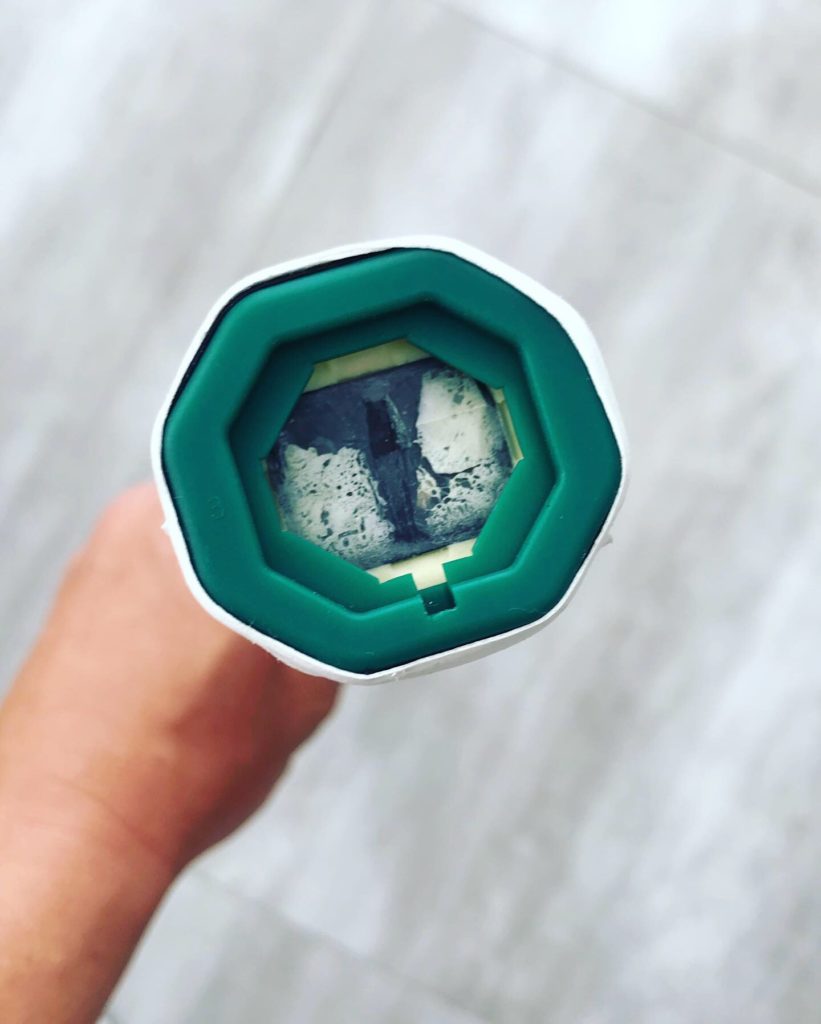
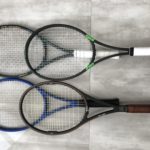
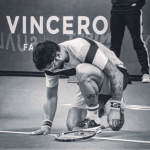




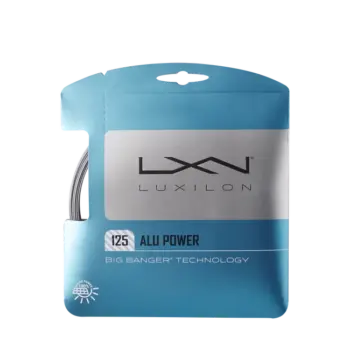





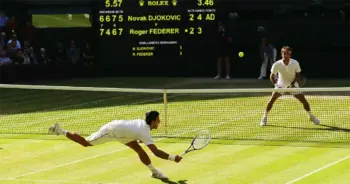
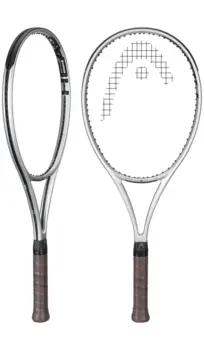

The problem are not vibrations, the problem is impact energy transfer. A light racquet is like a bike, and a heavy racquet is like a truck. If you have a collision, guess who is going to feel the strongest impact. Flexible racquets are like foam, stiff racquets are like metal. It is clear what is going to transfer the impact to your elbow. It is the same with stiff or high tension strings. During impact our tendons are creating a force that is opposed by impact energy transfer. During some milliseconds the tendon is stressed and opposed by a strong force. The tendon is receiving (the energy of) an impact. This is what create injuries, not vibrations. Dampening do not prevent injuries unless this dampening implies more flexibility.
Hi J
Having battled tennis elbow for three years, ending with surgery and a very long rehab, I wanted to offer a few thoughts — things missing from your recent video/article. The available therapies might help you a little — I had them all, including Botox — but these remedies are drops in the bucket. Don’t ignore the big-ticket items:
1) In my experience, the single most important technical decision is to drop tension. Yes, you need soft strings and a flexible racquet, but at your current tension it just isn’t enough. I ended up (with the help of a Davis Cup physio) playing with 16K for practice and 17K for matches. He warned me not to go higher. The good thing is, when you go down that low, you don’t have to worry about multis breaking after two hours — you can safely use a soft poly at that tension. Maybe your situation is not as dire, but I would still recommend going down to 21K right away, if not 20….if not 17.
2) Of all the remedies/therapies, don’t count on any of them doing all that much. It is a big industry nowadays, and if you look at the peer-reviewed research, none of them (shock wave, botox, US therapy, massage, grasten, acupuncture etc) manage to beat the placebo group. For me it was a waste of money. There is one exception: eccentric exercise. The tool of choice is called the Flex-Bar, and it can be purchased online for around $20. It’s a grooved, rubber bar that you hold with both hands (you can find the exercise on youTube). You use your healthy hand to load tension, and the sick one to release it. In effect, you’re extending the tendon, and giving it the eccentric stretch it needs without the burden of the concentric load. The benefit is documented. I think it was too late when I got started, but it still succeeded in building the strength of the tendon. No therapy is recommended if it causes pain, so some doctors give a cortisone injection simply to enable therapy, as long as you agree NOT to
3) continue repeating the behavior that caused the issue in the first place. This is really the bottom line. All the things you discuss are valid, but with TE, the greatest concern is getting out in front of it, as opposed to chasing it. If you have a real problem now, and you want to give yourself the best chance of recovery, you have to stop playing while you’re symptomatic. I know that isn’t what you want to hear — it certainly wasn’t what I wanted to hear, which is why I decided to chase the problem, and continue playing the first year. And as a result, after three years of constant setbacks, I needed surgery (the Tennex procedure), and have significant limitations today (Pro Kennex, 17K, no playing two days in a row, often no serving) even though the procedure was a success.
The Mayo Clinic did some research a few years ago, and determined that, no matter what you do, there’s I think a 75% chance your TE will resolve on its own within (2-3?) months, but that once chronic (4–5 months?), the average time to resolve is greater than 2 years. Let that be your incentive to chart a conservative path until you’re out in front. Take what they call an “active pause,” since rest alone is not advised. Get a red Flex-Bar, do 3×15 every night for a week or so, then add 3×15 rubber band grip stretches afterwards, once you feel you’re getting stronger. You can also add 3×15 with a stress ball afterwards. Always ice afterwards. If you continue to be free of symptoms for 2-3 months, start playing again against a wall using a 10% rule: establish yourself for 10 minutes at 25% power — tapping the ball, basically — and then increase either the duration or intensity by 10%. If symptoms arise, go backwards 10%. And when you make it to 100% for 45 minutes, you’re a free man. Changed, but free. Free to go way down in tension.
Sorry, that was more than I intended to write. I don’t want you to suffer like I did, and selfishly, I want the videos to continue. If your TE isn’t that bad, you might play your way through it. The point is, it’s a risk, and you have to beat it before it becomes chronic. Tendinosis vs tendinitis. And as I stated at the start, dropping tension, for me, is the no-brainer that should be included in any discussion of adaptations for TE.
Good luck, and feel free to contact me if I can be of assistance.
JA
Hi Jeff,
Sorry to hear about your struggles, but thanks a lot for sharing! Really helpful.
My elbow is not that bad yet, to be honest, so I am really trying to get in front of the problem. That is why, despite my urge to keep playing, I decided to take some time off and start serious therapy before the situation gets worse. I managed to get my knees in much better shape thanks to stubborn exercise and I hope I can do the same with my elbow.
The issue I have is also with my wrist. That could probably be worse than the elbow at the moment because the pain is more acute. It is definitely stemming from trying to change my forehand while testing new racquets. It was a tough and long journey and the price besides all the frustration has been an injured wrist. I will see how fast I can recover from both the elbow and the wrist. I aim to do whatever is required.
Thanks for your tips and support / J
I can echo what Jeff said. I too had the tendon surgery after trying to play through TE. If it is not too late, you have to let your tendon rest and recover. Overuse will likely and eventually end in a tear requiring surgery. It has been 14 months since my tendon surgery and my arm strength is maybe 70% at best on good days of what it was pre surgery. As Jeff indicated, I too face limitations… can’t play 2 days in a row, serving is very taxing on arm strength. I feel like an old pitcher having to monitor my pitch count as arm stamina isn’t what it used to be. The flex bar (mine is Therma Band) is great and is among best physical therapy that I do, along with tension bands, light weights, stretching, etc. Flex racquets, strings, string tensions, etc also will play a part but once you have TE I can’t stress enough how important the rest and physical therapy is to helping you not only recover from TE but to avoid further damage. If you are an addict like me, to stay on the court during your rest days learn to play off handed. I am left handed and after tearing my tendon I could not play for months with LH so I started playing right handed. It was really fun and challenging to learn to play with your other side. Eventually you get to where you can hit ground strokes well and play to some lesser degree of yourself. I got to where I could beat 3.5 level players but to regularly compete with 4.0 and beyond would require time and dedication to the serve…that was the most difficult task – to replicate the serving pace. Sorry to ramble but get your Rest and do your PT…and play off handed if you can’t stay off the courts. :)
Thanks for your comments, Jeff. Right on. I have one more suggestion. As my arm started to bother me, I used the flex bar and kept a thick rubber band in my car and during pauses in my driving, did stretches with my hand to open and reverse stretch the tendon. Plus, even more important, I hired a coach to help me with my technique. The serve was triggering one issue with the elbow; the other was a backhand lacking follow-through. With these corrections, and periodic tune-ups, I have been playing pain free in my arms for 20+ years! I won’t mention my knees…
How is Decathlon brand tennis Rackets
Pretty decent, but I have only tried the TR 990 Pro
Great article! Interesting how subjective gear is. I’m wondering, if you have 2 racquets with the same RA but different beam widths, which will be more comfortable? For me, it seems like thinner beamed racquets (Angel K7 Red, Yonex VCore Pro 97) hurt my arm, but slightly thicker beamed racquets (Prince Textreme Tour 100, Yonex Ezone) feel great even though they’re slightly stiffer on paper. I used the same string setup across the board fyi. Anyone else have this experience? Thanks!
Thanks for the article TN. I was surprised you didn’t include the Prince racquets, the phantoms and the synergy since they have very low RA and you included them in other best racquet articles. I have a shoulder injury and have been looking to get something else. The thing I can’t decide on is swing weight, if low or high is better or worse for this. Is there a racquet you think would be best? I play very spinny tennis and can now only play a slice serve due to my shoulder injury.